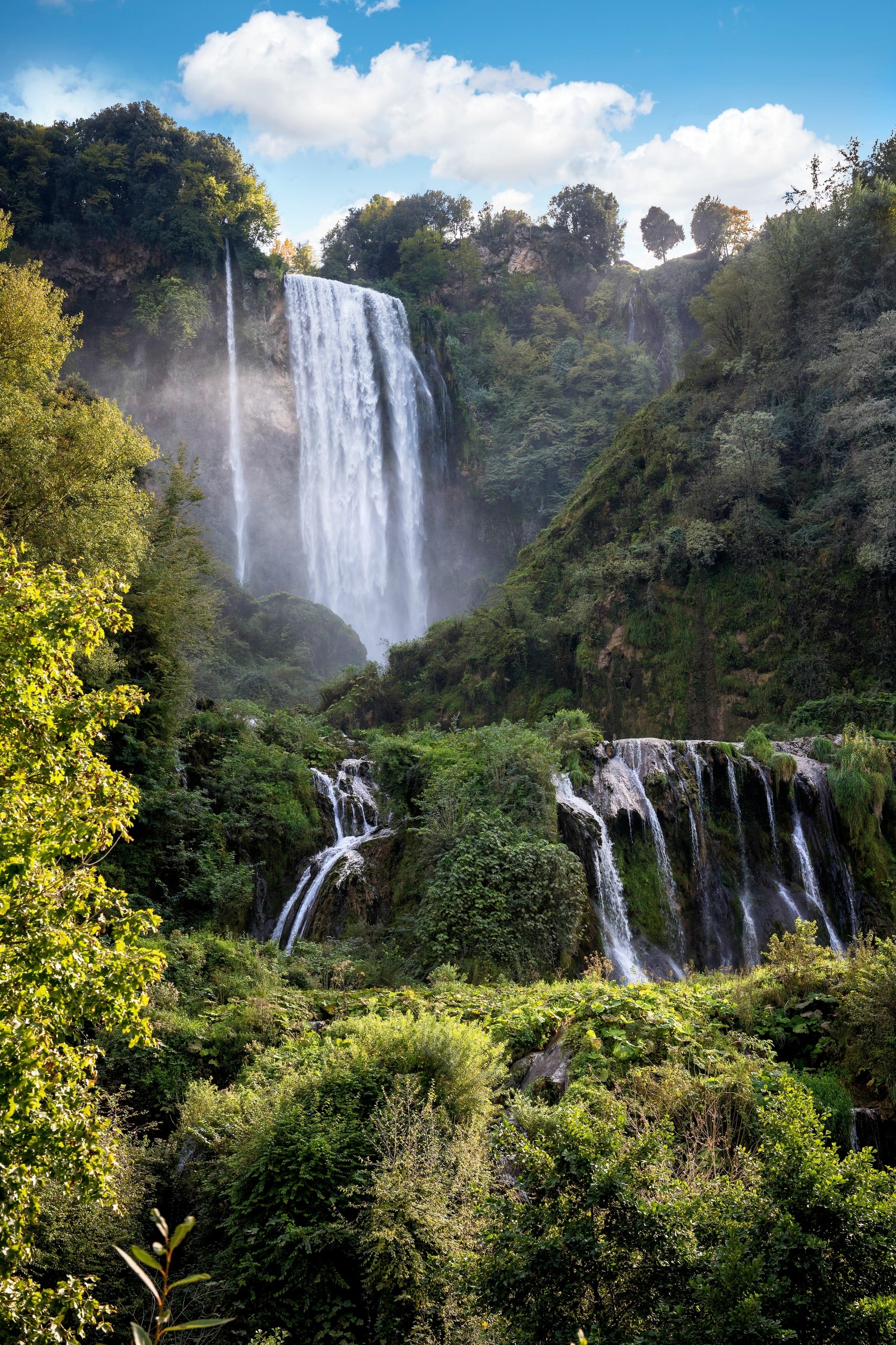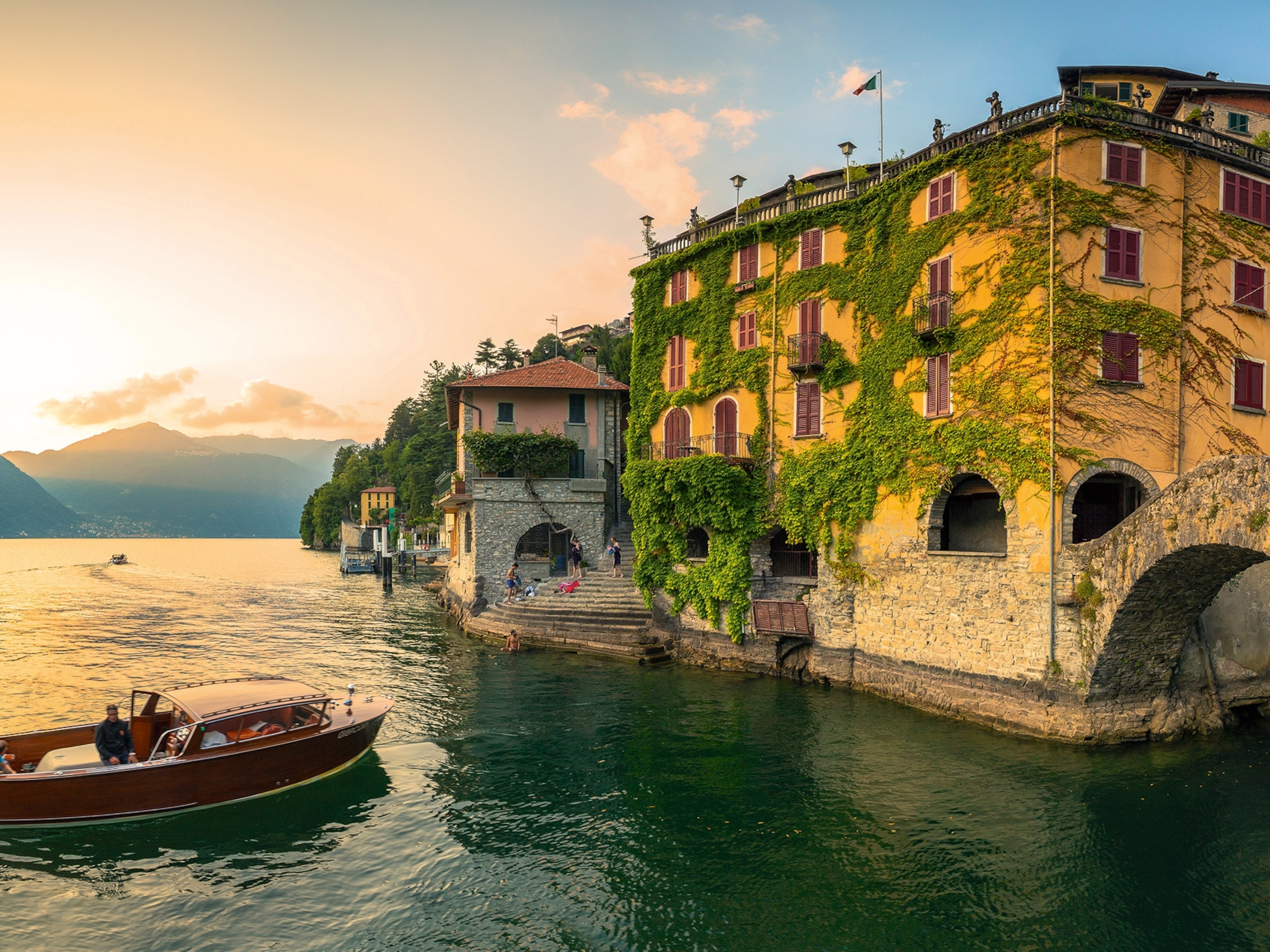
Rafting through history below Italy's Marmore Falls
One of Europe’s highest waterfalls, the Marmore Falls steal the show in central Italy's Umbria region. Below the cascade, a centuries-old history, arresting landscapes and adrenaline are all on offer.
"Forward… stop! Forward… brace!" shouts my rafting instructor Ronny as we career towards the seething rapids. Only minutes ago, at the first drop, Ronny has had to berate our team of four for lack of coordination. But now, tensed for the first difficult section of the descent, we're like a well-oiled machine. Boot-camp style, Ronny barks out instructions and we respond instantaneously, plunging our paddles into the water to power forward, leaping to one side to avoid capsizing.
We're navigating the torrents that rush downstream through a mossy gorge from the mighty Marmore Falls, one of the highest cascades in Europe. They're found in the central region of Umbria, dubbed Italy's green heart for good reason: with just under 900,000 inhabitants and a couple of modest-sized cities, it's dominated by verdant hills that roll almost uninterrupted as far as the eye can see. The landscape makes for a variety of hiking and cycling trails, but here in the region's Nerina Valley, where the Marmore Falls are fed by the Velino River and plummet down a cliff into the Nera River below, water takes centre stage — canoeing, kayaking and rafting are all high on the agenda.
The starting point of today’s rafting experience, offered by local outfitter Rafting Marmore, is beneath the last of the waterfall's three defining tiers, right beside the thundering cascade. These giant steps are carved out of a densely forested cliff face, where mist hovers fog-like among the canopy. The spray surges over the railings of the tier's viewing area, making us wet before we even reach the bank down a soaking staircase. Despite having had a comprehensive demonstration on dry land, our first few minutes in the raft are chaotic. But — decked out in wetsuits, life jackets and helmets, all provided by Rafting Marmore — we find our rhythm.

As with our paddling, the experience itself has to be perfectly timed, coinciding with the ‘turning on’ of the waterfall. Despite seeming a great wonder of nature, this 541ft cascade has been controlled by man ever since its inception in 271 BC. At the time, the Velino river would flood the hills above the local town of Rieti, spawning marshy, stagnant areas of water full of malaria-bearing mosquitoes. To solve the issue, a Roman consul ordered the construction of a canal to channel the water off a cliff down into the Nera River; the Marmore Falls were born. A 2,000-year-old testament to human ingenuity, they remain the highest man-made waterfall in the world.
Much of the water from the upper Velino river is now rerouted into a hydroelectric plant, meaning the falls are, most of the time, nothing more than a gentle stream. To the delight of visitors and thrill-seekers alike, the plant flicks a switch twice a day to direct the entire body of water over the cliff. When in full flow, the pounding water is a sublime spectacle, which Lord Byron described as a “matchless cataract, horribly beautiful” in his poem The Falls of Terni.
This makes paddling down the water strenuous, particularly in reverse. But the effort is well rewarded by sudden plunges over rapids, which fling water into our faces and make us grip the raft for fear of being jolted overboard. By the time Ronny announces we’ve finished the course, my arms ache, but I'm surprised to find myself wanting more of the rush. He plays a final trick on us, directing us to jump off the raft at the bank before revealing we need to swim through the icy water to the other side to reach the landing stage.
Later that day, I follow one of the six hiking trails around the falls. I stop en route at the Lovers' Balcony, a little terrace at the end of a tunnel, so close to the roaring cascade that you’re buffeted by copious amounts of water carried by the wind. I continue on to reach the higher viewing platform, up some 600 steps. At the top of the falls, I’m rewarded with a dazzling rainbow. Not even the Romans could have manufactured this.
Plan your trip
Ryanair flies direct from London to Perugia Airport (Umbria's international airport) in around two hours and 20 minutes. The closest town to the Marmore Falls is Terni; from here, regular bus services take visitors directly to the park.
Rafting Marmore offers guided rafting experiences to suit the breadth of experience, including beginners, and provides all necessary equipment.
A ticket is required to access the Marmore Falls Park and explore its hiking trails. Opening times change monthly, so check the website before visiting.
For more information, visit italia.it/en
Follow National Geographic Traveller (UK) on social media
Facebook | Twitter | Instagram




